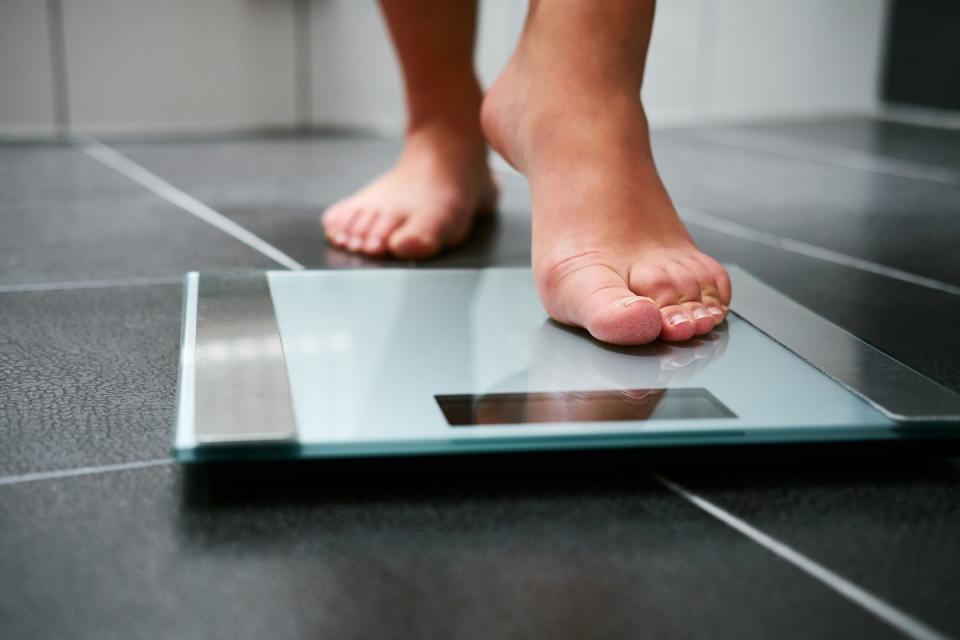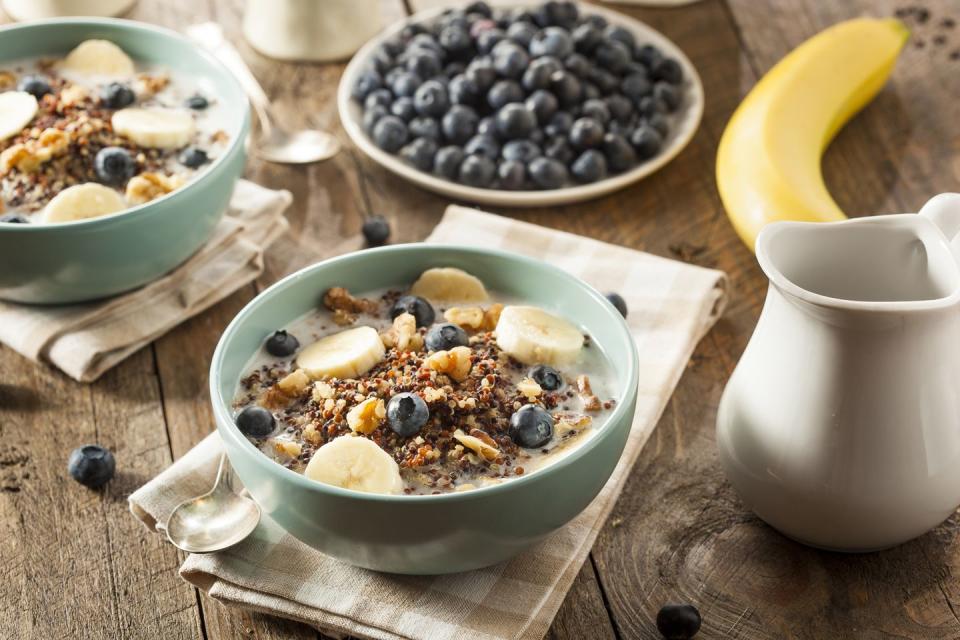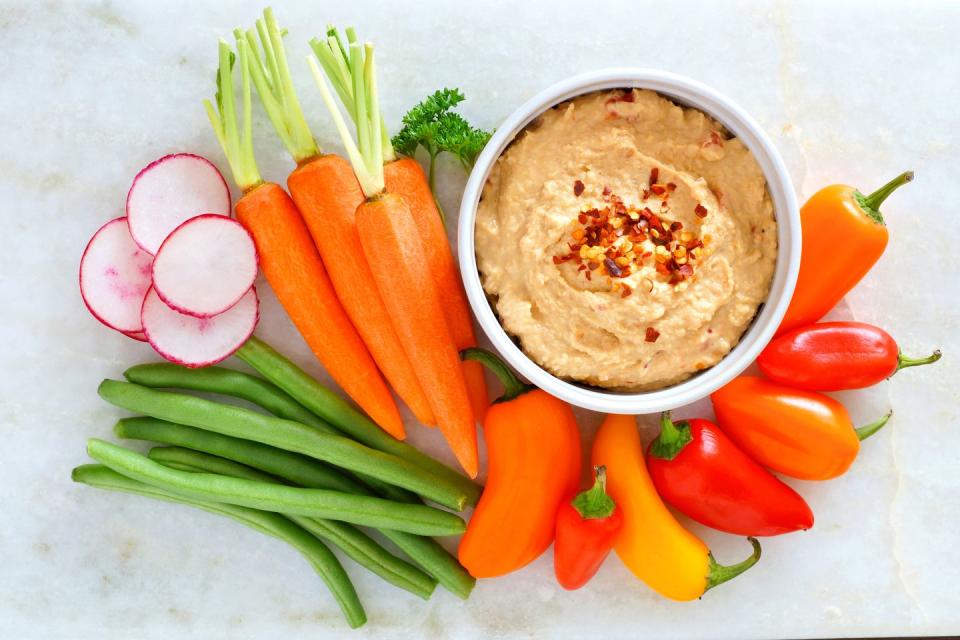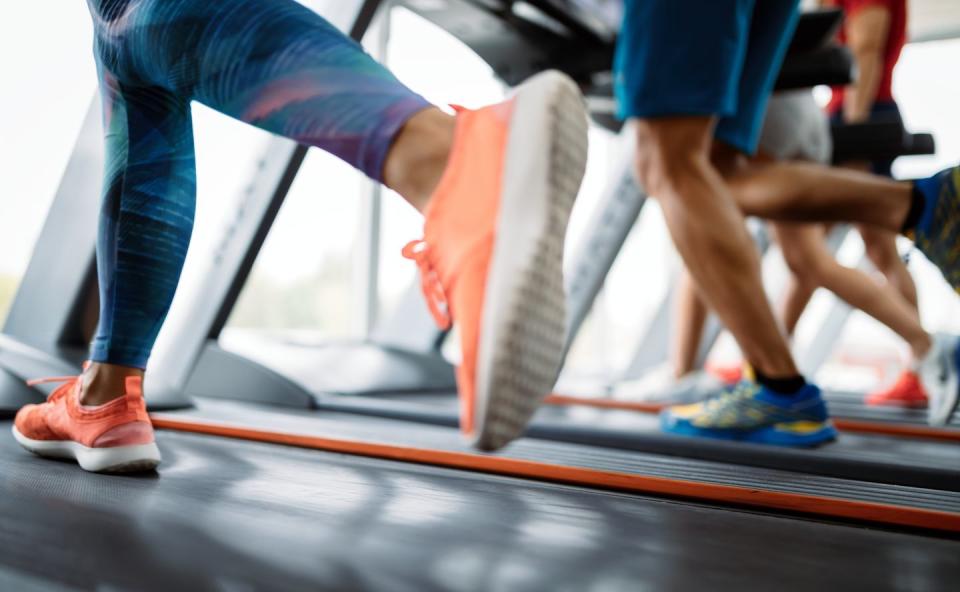The 8 Small Changes That Can Help You Lose 20 Pounds

Setting a goal to lose 20 pounds can sound daunting, but the steps you take to get there don't have to be. The secret to lasting weight loss is to make small yet meaningful changes — no drastic diets or exercise plans required.
"The biggest barrier with weight loss is the whole idea of feeling like you just aren’t motivated or thinking that everything is beyond your reach," says Jaclyn London, MS, RD, CDN. "Shifting your habits to be similar but just slightly more difficult than your current routine can help get you right on track to making changes that stick."
Renee Rogers, Ph.D., FACSM, an exercise physiologist with the University of Pittsburgh, agrees: "The reality is we have to take a step back and not try to fit the mold of something, but try to make small changes along the way."
Here's how to make those small tweaks and see a big pay-off. But first, remember to contact your physician before beginning any diet or fitness program. "We all have different metabolisms, and some of us should never lose two — not to mention 20 — pounds depending on where we’re at," London says.
Don't lose more than 1-2 pounds per week.
When you’re starting out, it’s tempting to ditch weight as fast as possible. We’re human, after all. But when it comes to people dieting on their own (e.g., without medical supervision), research supports a steadier approach.
"One to two pounds a week is what’s recommended and is considered a safe amount of weight loss," Dr. Rogers says. "It’s a more feasible and healthier approach, mentally and physically on your body, too." Following that rule of thumb, two to four months is a reasonable time frame to lose about 20 pounds.
London prefers looking at it as a percentage: "I wouldn’t recommend losing any more than 7-10% of your current weight in less than a three to six month range," she says. "Weight that comes off too fast for some may be impossible to keep off."
While you can lose weight quickly following a fad diet, strict rules can make it difficult to follow an extreme eating plan well into the future, not to mention make life harder to live right now.
"Absolutely people are going to lose weight when they do that, but the reality is that they’re probably going to be hungry, they may not enjoy the way that they feel, and all of those barriers down the line are going to creep back up," Dr. Rogers says. "The yo-yo dieting and the issues that we face with gaining and losing often are because we’re taking on strategies that just aren’t sustainable."

Eat something every 3-4 hours.
Have you ever dived into late-night snacks the day you skipped breakfast? Trying to "cut back" — especially earlier in the day — backfires every time, London says.
"It’s usually because we either skipped a meal or didn’t eat enough at any given meal —particularly of the combo of protein and fiber," she explains. Prevent that from happening by grabbing a snack or sitting down for a meal every four hours or so. Getting a mix of protein, fiber, and fat will fill you up and circumvent grazing later on.
Go big at breakfast.
Fueling yourself for the day starts with filling breakfast, whether it's peanut butter toast, a banana, and latté at the office, or whipping up a quick egg to go with last night's leftover veggies at home.
While it won't necessarily help you lose weight, there's also no concrete evidence that starting to eat breakfast will make you gain weight, London says. If you're already getting in your morning meal, consider doubling the produce portion or adding an extra heap of protein to the mix, she advises.
"You won’t 'overdo it' for the whole day simply because you’ll find yourself naturally cutting back at dinner and not wanting to snack nearly in the same way later on at night," she explains. "I’ve seen countless patients who lose weight simply by making breakfast a 'must-eat' and by making it more nutrient-dense every single day."

Think more produce, more often.
"When it comes to vegetables and fruit, the bottom line is that more is more (a.k.a. better)," London says. "Eat more of these foods, and no matter what else you’re doing, you’re going to lose weight."
Her rule of thumb: Make your plate at least half veggies. Stir them into your omelette, stuff 'em into a sandwich, start dinner with a salad, you name it. This can apply to your midday snacks too.
"Add a piece of fruit or an extra serving of veggies to any snack you’re making," London advises. "Swap crispy radishes, carrots, and jicama slices for chips with dip; choose apple slices instead of crackers as the vehicle for your peanut butter; choose any bar or packaged snack that has a real vegetable or fruit as the first ingredient; or keep a piece of produce (apple, pear, orange — ones that come in their own little 'packaging') in your bag."

Instead of eliminating carbs or sugar, choose more "whole" foods.
No, we're not talking about the grocery store chain. "Whole describes the best form in which to eat fiber-filled fruit and veggies," London says. "Eating more food in its natural state helps you replace less nutritious foods, and all of the nutrient-poor additives that they bring with them." That means choosing fruit instead of fruit juice; vegetables instead of veggie chips; whole-grain bread instead of burger buns; or a baked sweet potato instead of sweet potato fries.
"This does not mean completely eliminating these ingredients, meals and snacks from your diet, but choosing whole foods more often," London explains. "It create eating patterns that will make your body feel great and give you confidence in your ability to stay in the driver’s seat."
Skip sugary drinks.
Sweetened coffee and tea, energy drinks, soda, alcohol mixers, and even 100% juice are all sugar-containing beverages that provide calories without really filling you up. One of the simplest (and most efficient) ways to cut back in general is to replace them with calorie-free water, seltzer, unsweetened coffee and tea, and the occasional diet soda.
"If you’re looking to lose quickly and keep booze in your life, that’s okay, too," London says. "Go with spirits on the rocks, and just pull in the reins on the other beverages."

Work your way into exercising 5 minutes at a time.
Adults need at least 150 to 300 minutes of moderate-intensity aerobic activity each week, according to the Physical Activity Guidelines for Americans. Getting active can provide immediate benefits like reduced anxiety and improved sleep quality, but also benefit your health long after you leave the gym. Exercise will help prevent excessive weight gain and maintain a healthy one, according to the U.S. Department of Health and Human Services.
"Diet really drives weight loss, but exercise ends up being a very important behavior for assisting," Dr. Roger explains. She advises establishing a pattern of working out now so your fitness routine can help keep weight off later on. The first week, try doing 10 minutes of activity for five days. The next week, go for 15 minutes, and slowly ramp up from there. The more minutes you do, the more calories you burn, and the more it’s going to help with your weight loss.
“I like to tell my patients, 'Give me five,'" Dr. Rogers says. "'Give me five days and let’s start to build up the minutes on those days so you develop a positive pattern.' Eventually when they’re feeling good and starting to lose weight and the body’s stronger and becoming acclimated, they find very quickly they’re able to do more and more minutes."

Focus on aerobic workouts.
Dr. Rogers defines aerobic exercise as anything that gets you to break a sweat and raise your heart rate. While weight training can help you build muscle strength and support bone health, it’s not going to burn as many calories as aerobic exercise, so if you’re short on time and prioritizing weight loss, put the emphasis on moving more instead, she advises.
Even moderate activity can make a big impact. "As a novice to getting moving, brisk walking is still up there as one of the number one things you can do," Rogers says. "The idea of 'no pain, no gain,' that’s old-school thinking."
It’s more important to find what you like to do than focusing on the perfect thing to do, she adds. Choosing an activity that you’re willing do five days per week will get you a lot farther than forcing yourself into something you’re not a fan of.
“If you love to dance, forget about going to the gym and getting on the treadmill — find a fun dance class that you like,” Dr. Rogers says. "At the end of the day, it really comes down to being passionate about what you’re trying to do."
Increase how much you move throughout the day.
When you’re trying to get more active, scheduling regular breaks throughout your day can help. Set a timer on your phone reminding you to get up once per hour while you’re at work, either to march in place for a bit or take a brisk two-minute walk around your home or office, Dr. Rogers suggests.
If you’re hard-pressed to find 30-minute chunks in your schedule for working out, you can also build active minutes into your day, she says. Start by doing 10 minutes in the morning before the kids get up, sneak in another 10 on your lunch break, and then get the last 10 by walking around the building or block at the end of the work day.
You Might Also Like

